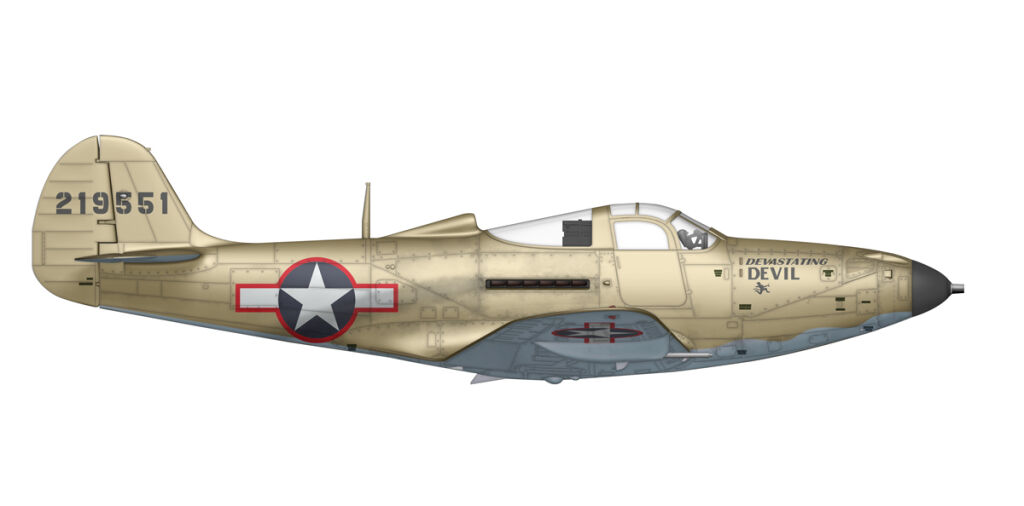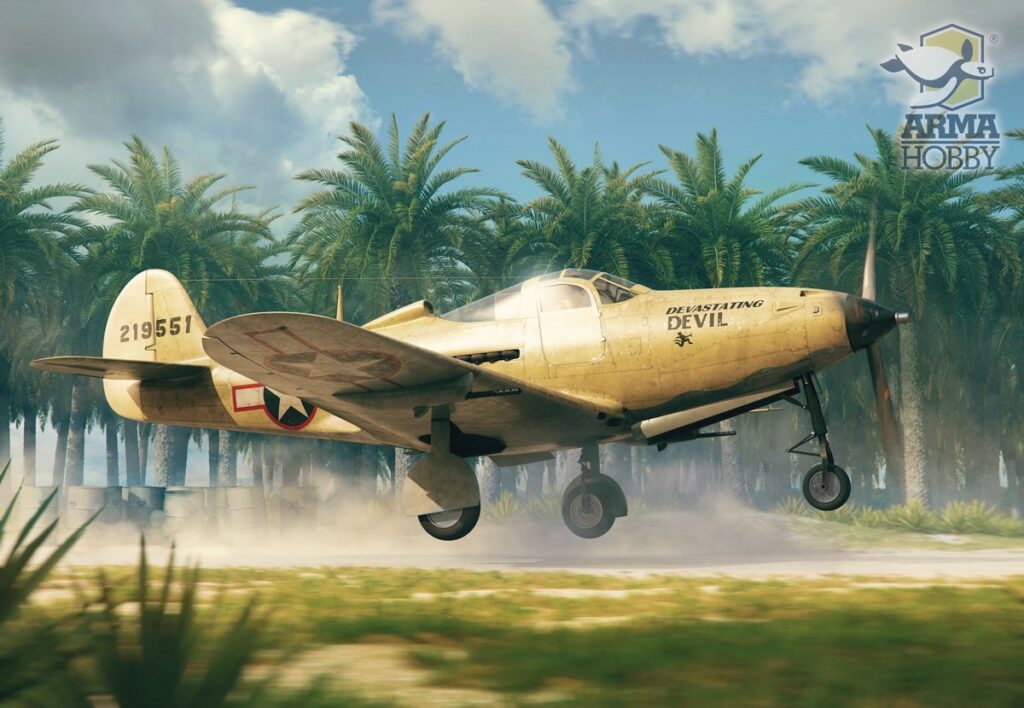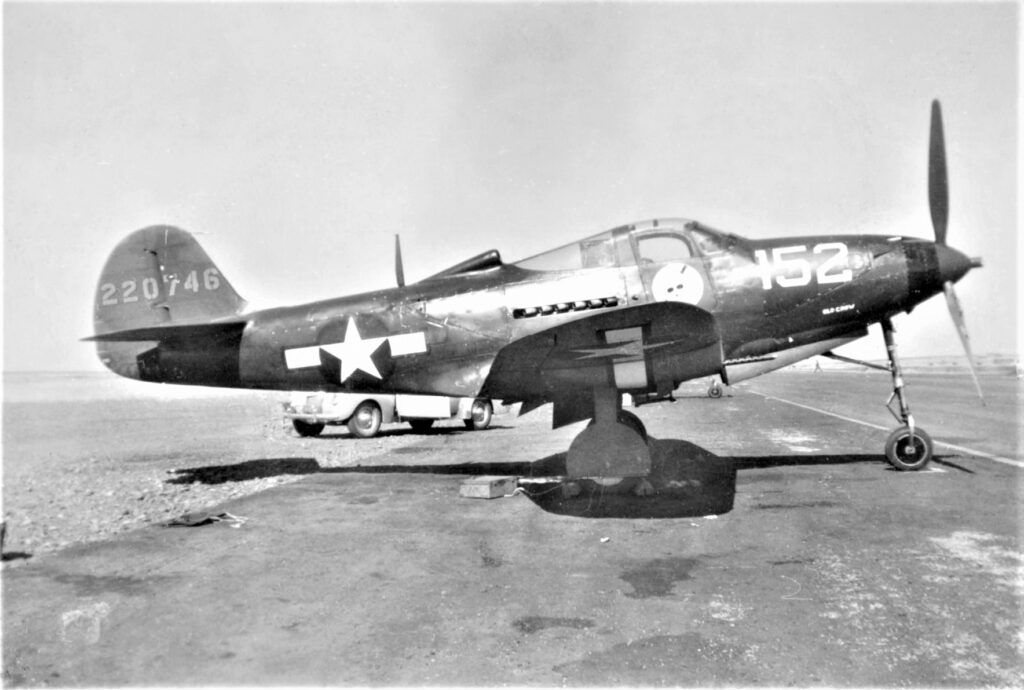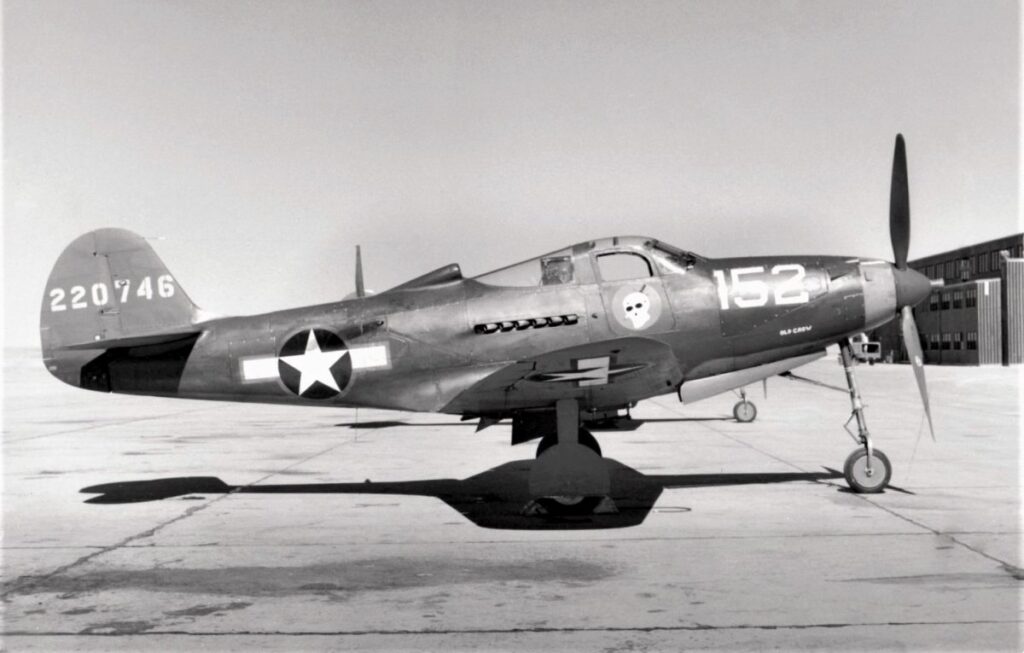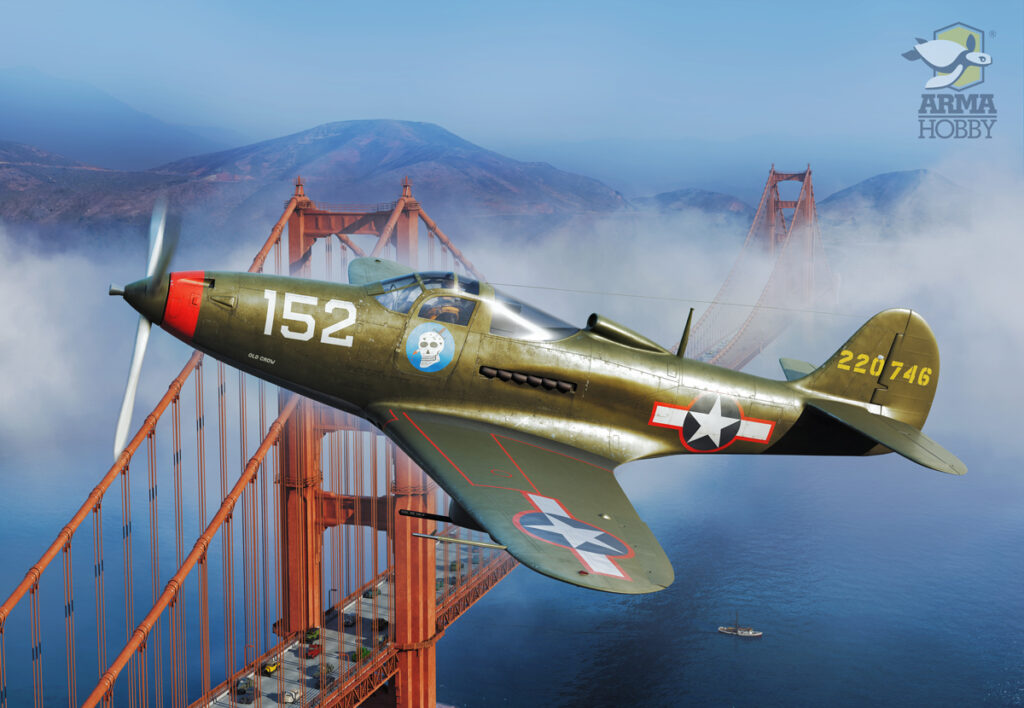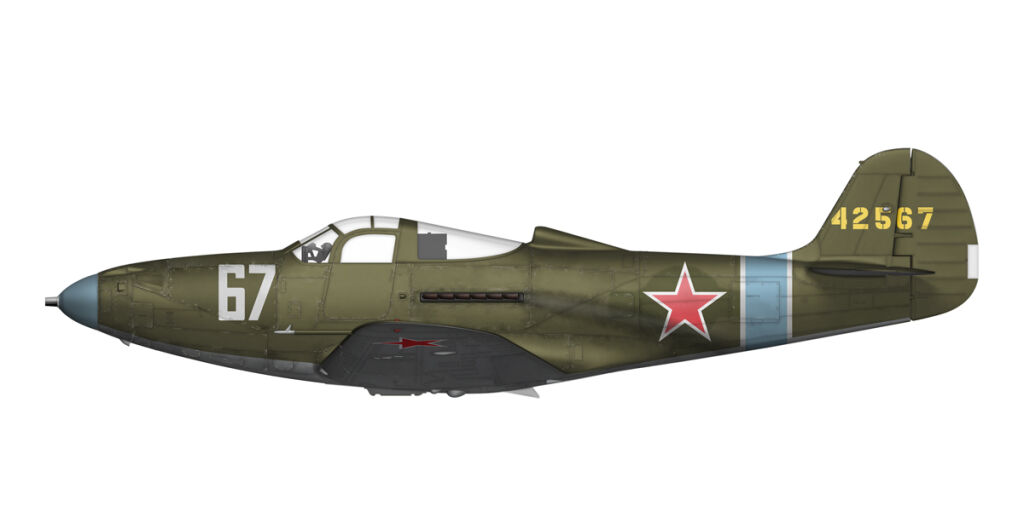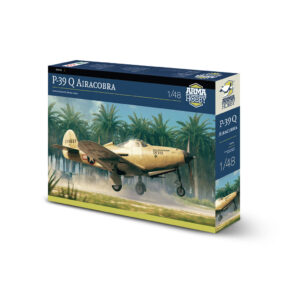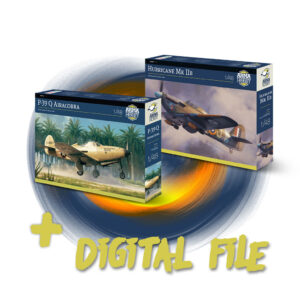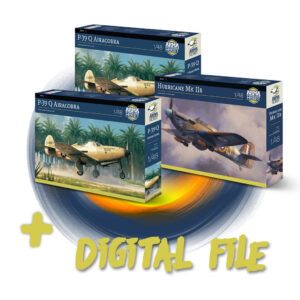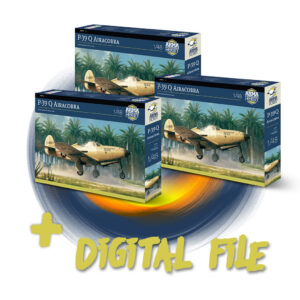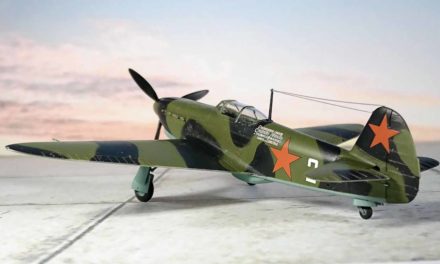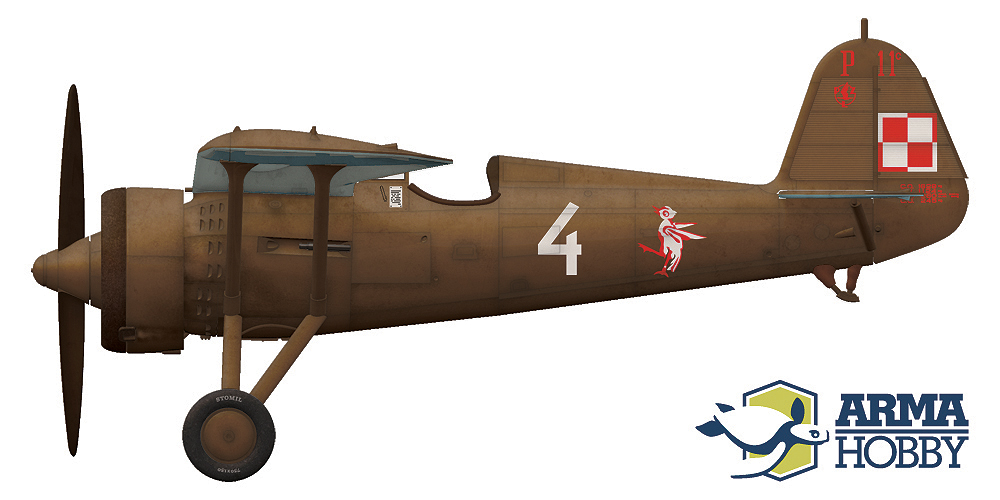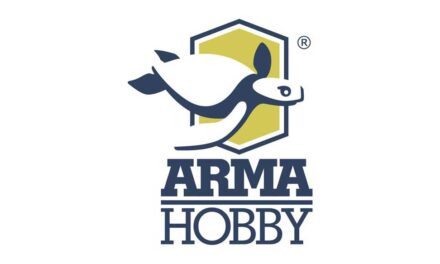We are excited to present the various colour and marking options available for the P-39Q Airacobra in our latest 1/48 scale kit, catalog number #40010. This kit features liveries for three distinct aircraft:
1. P-39Q-1 Airacobra, 46th Fighter Squadron, 15th Fighter Group, Makin, Gilbert Islands, Late 1943
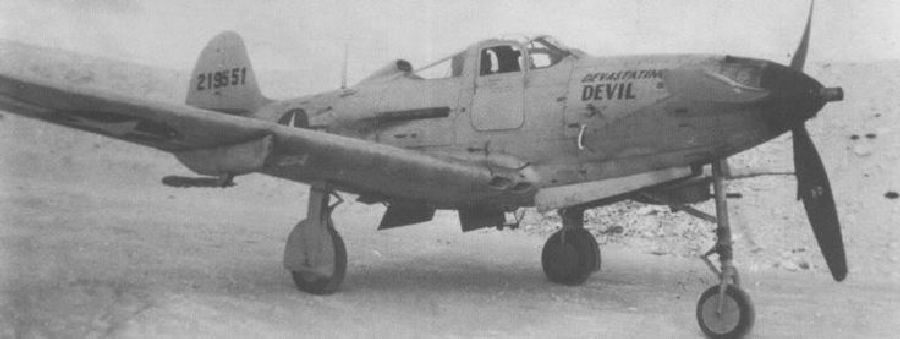
The primary front where the USAAF deployed the P-39 Airacobra in the early stage of the war was the Pacific. The first Airacobras arrived on South-West Pacific islands even before the war outbreak and served well in defending Allied positions against Japanese assaults. An extraordinary sand-colored Airacobra included in our kit also stationed on a remote atoll in mid war period.
This aircraft’s intriguing livery and historical significance have been extensively covered by Jarek Jaworski. His article delves into the mysteries of its unique paint scheme and answers the question, “Where exactly is Makin?” For a deeper dive into the story, check out the #Armastory:

2. P-39Q-10 Airacobra, 363rd Fighter Squadron, 357th Fighter Group, Pilot Lt. Clarence “BUD” Anderson, Oroville, California, October 1943
“Bud” Anderson’s plane at Oroville Air Force Base, California, and Caspar Air Force Base, Wyoming, in the fall of 1943. Photos obviously taken with different colour filter, so red seems to be dark on the first picture.
An important role of the P-39 Airacobra was training pilots within the United States. This aircraft was flown by triple ace Lt. Clarence “Bud” Anderson, who consistently named his aircraft after the brand of Kentucky Straight Bourbon. “Old Crow” was stationed in Santa Rosa, California, close to the Golden Gate Bridge in San Francisco. The squadron then moved to Oroville in the same state. Everywhere Bud went, he was accompanied by his cream-colored 1939 Ford Convertible. In October, the unit relocated to Casper, Wyoming, from where it departed for Europe in November 1943. The aircraft clearly features stars with red outlines (matching the color of the nose on aircraft in the 363rd Squadron) and is well-maintained. Notably, there are changes to the nose wheel, and the 12.7 mm machine gun pods have been removed from under the wings.
Learn more about Anderson’s “Old Crow” and his exploits in an #Armastory authored by Jim Roeder, a historian of the 357th Fighter Group:
3. P-39Q-15 Airacobra, 68th GIAP, 5th GIAD, Winter 1944-45

The Soviet Air Force used nearly half of all produced Airacobras. The Soviet Air Force used nearly half of the produced Airacobras. Lacking a second-stage supercharger, the P-39 fighters were unsuitable for high-altitude escort missions and thus were not deployed against the Luftwaffe over Germany. However, they excelled as low-altitude support fighters on the Eastern Front. This particular aircraft features simple yet distinctive color elements and was piloted by unknown Soviet pilots on the way to Berlin.
Pre-Order and Special Offers
The P-39Q Airacobra model in 1/48 scale is available for pre-order until the end of June 2024. To celebrate the launch, we are offering several promotional packages:
- Standard Kit: Enjoy a 10% discount and receive a free 3D file for printing cockpit accessories.
- Promotional Bundles: Buy 2, 3, or 4 kits at discounted prices, each with a free 3D file.
- Additional 3D Files: Purchase dedicated 3D printed accessories for the P-39Q Airacobra at attractive prices.
Don’t miss the opportunity to add this historically rich and detailed model to your collection. Pre-order now and take advantage of these limited-time offers before they expire.
- Looking for P-39Q Airacobra kit 1/48 and 1/72 saale? Visit our Shop and explore the fascinating colours of each variant.
Modeller happy enough to work in his hobby. Seems to be a quiet Aspie but you were warned. Enjoys talking about modelling, conspiracy theories, Grand Duchy of Lithuania and internet marketing. Co-founder of Arma Hobby. Builds and paints figurines, aeroplane and armour kits, mostly Polish subject and naval aviation.
This post is also available in:
 polski
polski



